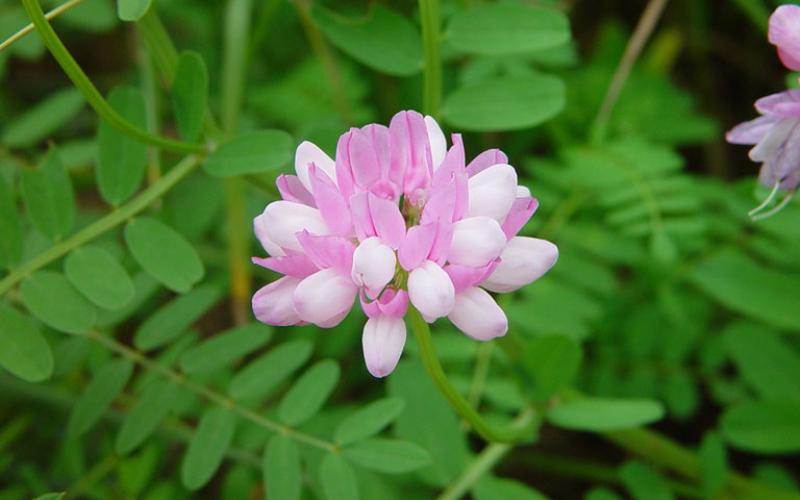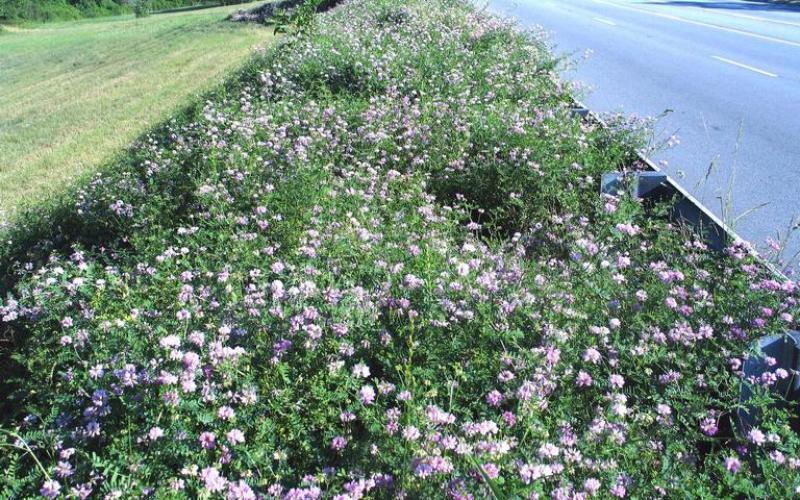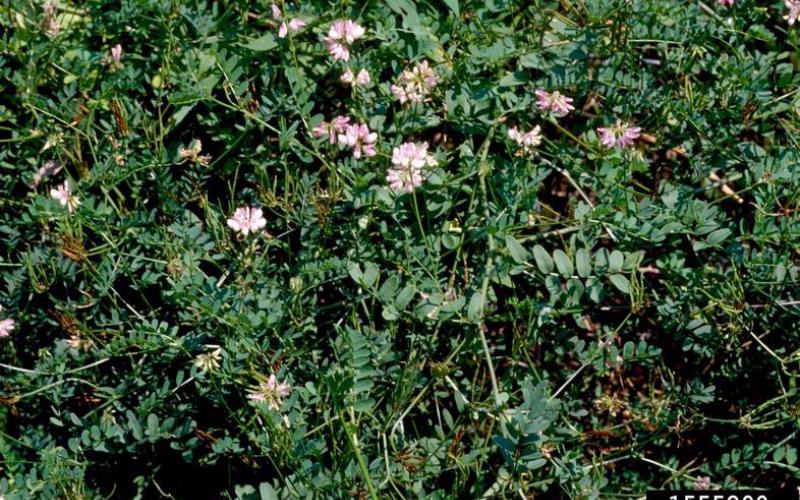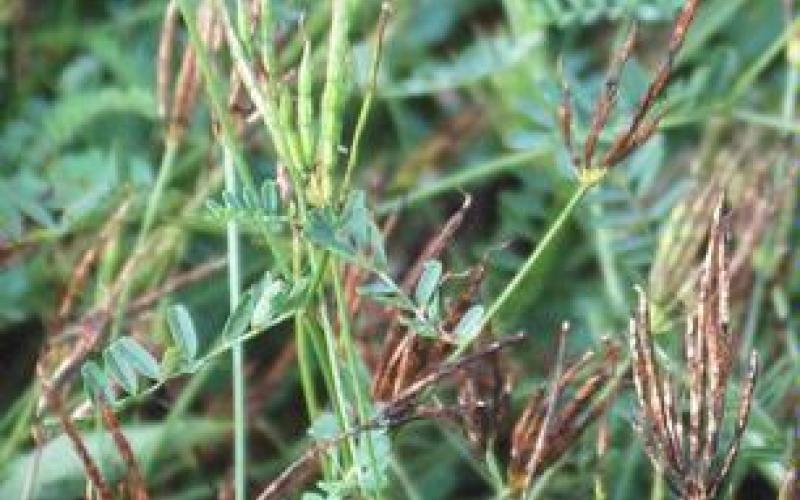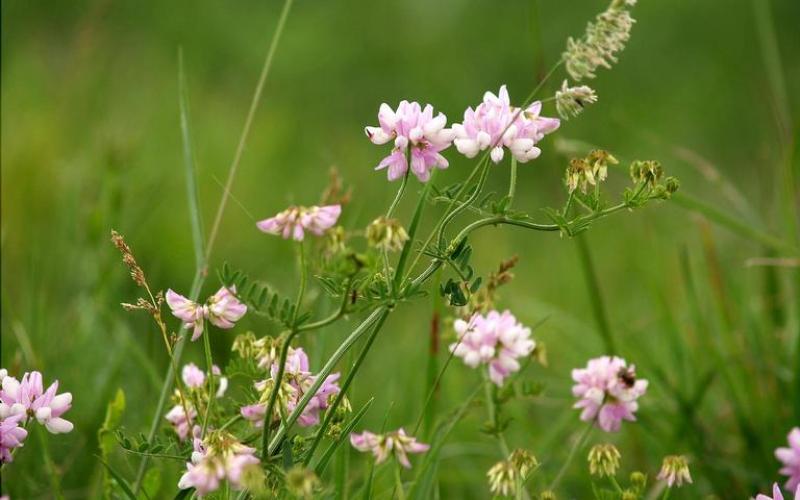Common Name: Crown Vetch
Scientific Name: Securigera varia (L.) Lassen, formerly Coronilla varia L.
Legal Status
Propagation and sale of this plant are prohibited in Minnesota. Transportation is only allowed when in compliance with Minnesota Statute 18.82. Although Restricted Noxious Weeds are not required to be controlled or eradicated by law, landowners are strongly encouraged to manage these invasive plants on their properties in order to reduce spread into new areas.
Background
Crown Vetch is native to central and Eastern Europe, and the Caucus region of Asia. It was introduced to the US as early as the mid-1800s, and by the 1950s became widely planted as a groundcover, cover crop, and bank and slope stabilizer along roads and waterways. It is now found across the continental U.S. and in most counties of Minnesota. In Minnesota, it has been planted as a cover crop and used for soil stabilization, but these uses are in decline due to the invasive nature of the plant.
Description
- Crown vetch is an herbaceous perennial in the legume family. Its stems will grow to 2 - 6 feet long in a trailing, creeping growth pattern.
- The leaves are dark green, pinnately compound, with 15 - 25 pairs of oblong leaflets.
- Flowers are small umbels, pinkish-lavender to white, borne in clusters at the end of the leaf axils. Plants will bloom from May through August.
- The fruit are 2 - 3 inches in length, flattened, finger-shaped pods borne in crown-like clusters, and contain many small seeds.
- Roots are aggressive rhizomes, growing horizontally up to 10 feet and vegetatively producing new plants.
Habitat
Crown Vetch readily invades prairies, dunes, woodland edges, streambanks, pastures, rights-of-way, and roadsides. It prefers open and sunny habitats. It is tolerant of all different soil types, saline and alkaline soils, and drought conditions.
Means of spread and distribution
Crown vetch spreads through seeds and vegetatively through rhizomes. It can be introduced to new areas by moving soil infested with rhizome fragments. Its primary spread historically has been through intentional planting. Some research suggests that deer and other small animals move crown vetch seed to new areas.
Crown vetch is found in the majority of the counties of Minnesota.
Impact
Crown vetch overtakes and suppresses other vegetation, reducing species diversity and wildlife habitat. Due to its creeping growth habit, it can cover and shade out other plants and eventually form dense monocultures. Infestations, over time, can cover several acres of land.
Prevention and management
- Once established, crown vetch is difficult to control. For all management options, infestation sites will need to be monitored for several years and treated repeatedly until the seedbanks are depleted.
- Do not plant crown vetch. Find alternative cover crops or native plants that can be used for soil stabilization.
- Mowing can be effective to slow the spread if done on schedule to prevent seed formation, and for successive years. For complete eradication, mowing will need to be performed in conjunction with another control method, like herbicide application.
- Prescribed burning in late spring for several successive years is an effective control method. Make sure to contact the Minnesota Department of Natural Resources to learn more about control burning practices and regulations.
- Large infestations can be controlled by spot-spraying with foliar herbicide applications. If using herbicide treatments, check with your local University of Minnesota Extension Agent, co-op, or certified landscape care expert for assistance and recommendations. There are several businesses throughout the state with certified herbicide applicators that can be hired to perform chemical applications.
Toxicity
There are conflicting reports of crown vetch alternatively causing pasture bloat in livestock, and being safe for cattle to graze on.
